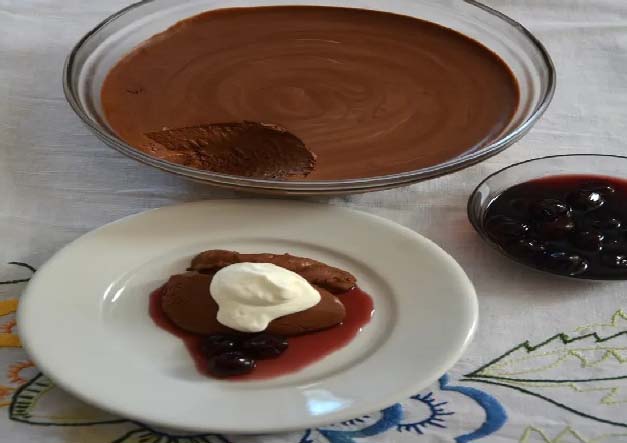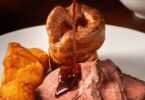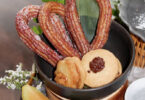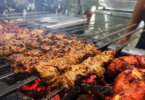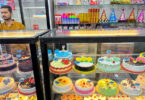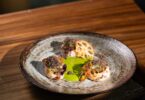Rachel Roddy
Pudding – maybe my favourite ever – arrived in two bowls. The first was glass and filled to the brim with chocolate mousse. The second, of white, fluted plastic, was twice the size of the first and full of whipped cream. Both were put on the living room sideboard along with a pile of plates and a remarkable selection of spoons: tea, soup, table, plastic, serving. Also a few forks and what seemed to be a catering ladle, which someone decided was the best thing for the cream. So in a small flat filled with dozens and dozens of people under a light covered with tissue paper, we all helped ourselves to mousse and large amounts of cream that required flicking to get it out of the ladle.
In his book On Food And Cooking, Harold McGee notes: “The full foaming power of egg white seems to have burst forth in the early 17th century.” Of course, eggs’ ability to foam was known long before this, but the extent of foaming was no doubt limited by tools, or the lack of them. Then “sometime around 1650, cooks began to use more efficient whisks, of twigs or bundled straw”.
As a rule, physical agitation destroys structure. With egg whites, however, the opposite is true: whisking creates structure, the air disrupting and unfolding proteins, which in turn form bonds, a sort of protein bubble mesh, if you like, holding water and air in place. By whisking egg whites, cooks were able to “harvest the air”, meaning opaque and watery whites became voluminous, stiff peaks, and meringues and souffles started to appear in cookbooks. Over time, custard, syllabubs and cream puddings were aerated into mousses. Then, when cocoa, having arrived from the eastern coast of central Mexico, changed the shape of cooking, that met mousse, too.
There are various theories about the origins of chocolate mousse: that it was created by Louis XVI’s Swiss chef; that it was first included in André Viard’s culinary encyclopedia Le Cuisinier Impérial; an invention in the late 1800s by the artist Toulouse-Lautrec … Maybe it is all of them whisked together, with real acknowledgment to the Olmecs for the chocolate. My mousse is based on the recipe from the friend who hosted (and cleared up) the aforementioned party. I use an electric two-whisk beater. It is ideal for the egg whites, but messy for the cream, which means I lose at least 5% to splatters, but that is a price I am prepared to pay.
Chocolate mousse
Chocolate invariably makes people happy: bars, squares, buttons, cake, pudding, brownies. Chocolate mousse, on the other hand, makes people happy and delighted, which I put down to the aeration and millions of tiny bubbles. They also explain the giddiness it provokes: chocolate mousse is the helium balloon of desserts. Add to its helium nature some whipped cream, cherries in syrup, large serving spoons and a ladle.
Serves 10
300ml single cream
250g 60-70% chocolate, chopped
3 eggs, separated
Salt
80g icing sugar
200ml whipping cream, plus more for serving
Put the cream and chocolate in a pan and warm it on a medium-low heat, stirring constantly. As soon as the cream starts to approach a boil (do not let it boil), pull the pan off the heat and stir until the chocolate melts in the residual heat.
While you leave the cream and chocolate to cool slightly, whisk the egg whites and a pinch of salt until foamy, then add the icing sugar and whisk again until it stands in stiff peaks. In another bowl, whisk the whipping cream, also to stiff peaks.
Stir the egg yolks into the cream and chocolate mix, then fold in the whites and cream, working slowly but steadily, until everything is well incorporated and the colour consistent.
Scrape the mousse into a large glass bowl (or individual bowls) and chill in the fridge for at least six hours (any less and it won’t have the required velvet texture) and up to 24. Serve with cherries in syrup and more whipped cream.
Courtesy: theguardian

